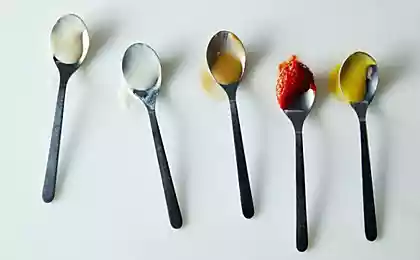318
10 facts about the spontaneous combustion of burning people
In medicine tense debate: Can people spontaneously burn down without affecting the external heat? The site tells some interesting facts about the spontaneous combustion. < 1. This phenomenon is called spontaneous human combustion, or abbreviated, MF. He was considered a manifestation of cases where a person dies from the heat, flashing inside his body. All available records traced the same principle.
2. Lonely victim literally devoured alive the flame, and usually it happens in your own home of the victim. In this extremity, such as the hands, feet or lower leg, often remain untouched by fire. Torso and head, in turn, charred beyond recognition; In rare cases, internal organs are also unmoved.
3. A distinctive feature of the MF is the fact that the room of the victim is no evidence of a fire, with the exception of oily soot on furniture and walls. Often it remains hanging in the air the characteristic sweet smell of smoke, indicating the incident happened.

References to spontaneous human combustion in historical documents 4. In 1470, an Italian knight Vorst drank some good wine, while in his home in Milan, surrounded by family. According to their testimony, he suddenly began to spew fire, then the flames engulfed him completely. This record is the first recorded upon occasion in the history of spontaneous human combustion.
5. Another incident occurred in 1725, when Paris innkeeper was awakened by the smell of smoke and found that his wife, Nicole Millet, turned to dust, and a straw mattress on which she slept, almost did not suffer Fire, as well as other wooden objects that were in the immediate vicinity of the deceased. Charred skull fragments of the spine and lower leg - that's all that was left of Madame Millet, drunken alcoholics. The cause of death recorded "Divine Intervention».
6. In the 19th century, the theme of human spontaneous combustion was popularized in no small part thanks to Charles Dickens, the famous English writer who has chosen this method for the murder of one of the negative characters in his novel "Bleak House».
Common features of spontaneous combustion of the victims gathered in 1938 7. In 1938, in the "British Medical Journal" has been formulated for the list of common features of all cases of spontaneous combustion:
alcoholism victims; the majority of the victims were elderly women; despite the fact that the body is lit up with spontaneously, it necessarily preceded by contact with a combustible liquid; li > hands and feet nearly always remain unaffected by burning; fire almost hit surrounding objects, even in contact with the body; after burning the body remained greasy sticky ash and distinctive sharp the smell. 8. There are several theories about what may cause spontaneous human combustion, in addition to the above-mentioned alcohol. These include flammable human fat accumulation acetone or methane, discharges of static electricity, exposure to bacteria or stress.
9. The most midrange phenomenon explains the theory of "human candle." The candle consists of a wick surrounded by wax. Fire ignites the wick and wax keeps it burning. According to this theory, if we compare the human body with a candle, the clothes and the hair-covered skin fat, play the role of a wick. The role of the wax takes the subcutaneous fat of the victim.
10. The modern case of spontaneous combustion occurred in Ireland in 2010. Charred body of an elderly man was found in a locked room near the fireplace. Despite the terrible damage, there was no trace of fire or on the walls or on the ceiling, even directly over the body, nor anywhere else in the room. Irish coroner later confirmed that it was a spontaneous combustion caused the death of 76-year-old Michael Faherti.
via mixstuff.ru/archives/89218
2. Lonely victim literally devoured alive the flame, and usually it happens in your own home of the victim. In this extremity, such as the hands, feet or lower leg, often remain untouched by fire. Torso and head, in turn, charred beyond recognition; In rare cases, internal organs are also unmoved.
3. A distinctive feature of the MF is the fact that the room of the victim is no evidence of a fire, with the exception of oily soot on furniture and walls. Often it remains hanging in the air the characteristic sweet smell of smoke, indicating the incident happened.

References to spontaneous human combustion in historical documents 4. In 1470, an Italian knight Vorst drank some good wine, while in his home in Milan, surrounded by family. According to their testimony, he suddenly began to spew fire, then the flames engulfed him completely. This record is the first recorded upon occasion in the history of spontaneous human combustion.
5. Another incident occurred in 1725, when Paris innkeeper was awakened by the smell of smoke and found that his wife, Nicole Millet, turned to dust, and a straw mattress on which she slept, almost did not suffer Fire, as well as other wooden objects that were in the immediate vicinity of the deceased. Charred skull fragments of the spine and lower leg - that's all that was left of Madame Millet, drunken alcoholics. The cause of death recorded "Divine Intervention».
6. In the 19th century, the theme of human spontaneous combustion was popularized in no small part thanks to Charles Dickens, the famous English writer who has chosen this method for the murder of one of the negative characters in his novel "Bleak House».
Common features of spontaneous combustion of the victims gathered in 1938 7. In 1938, in the "British Medical Journal" has been formulated for the list of common features of all cases of spontaneous combustion:
alcoholism victims; the majority of the victims were elderly women; despite the fact that the body is lit up with spontaneously, it necessarily preceded by contact with a combustible liquid; li > hands and feet nearly always remain unaffected by burning; fire almost hit surrounding objects, even in contact with the body; after burning the body remained greasy sticky ash and distinctive sharp the smell. 8. There are several theories about what may cause spontaneous human combustion, in addition to the above-mentioned alcohol. These include flammable human fat accumulation acetone or methane, discharges of static electricity, exposure to bacteria or stress.
9. The most midrange phenomenon explains the theory of "human candle." The candle consists of a wick surrounded by wax. Fire ignites the wick and wax keeps it burning. According to this theory, if we compare the human body with a candle, the clothes and the hair-covered skin fat, play the role of a wick. The role of the wax takes the subcutaneous fat of the victim.
10. The modern case of spontaneous combustion occurred in Ireland in 2010. Charred body of an elderly man was found in a locked room near the fireplace. Despite the terrible damage, there was no trace of fire or on the walls or on the ceiling, even directly over the body, nor anywhere else in the room. Irish coroner later confirmed that it was a spontaneous combustion caused the death of 76-year-old Michael Faherti.
via mixstuff.ru/archives/89218
8 smelly facts about how people in the Middle Ages survived without bathing
The easiest way to get to sleep quickly























